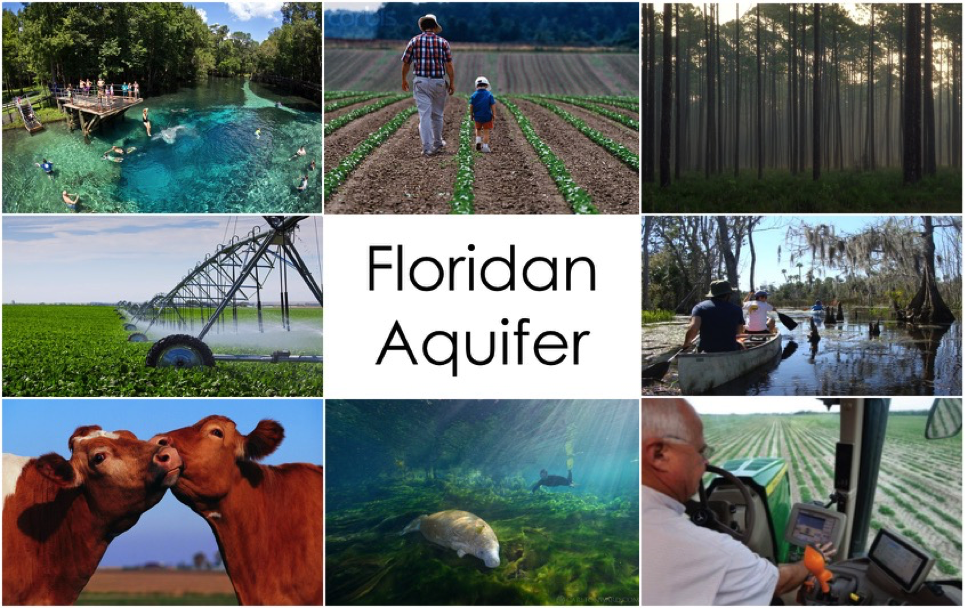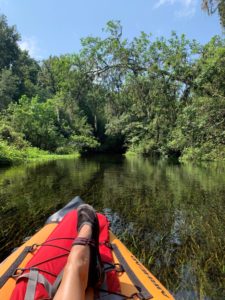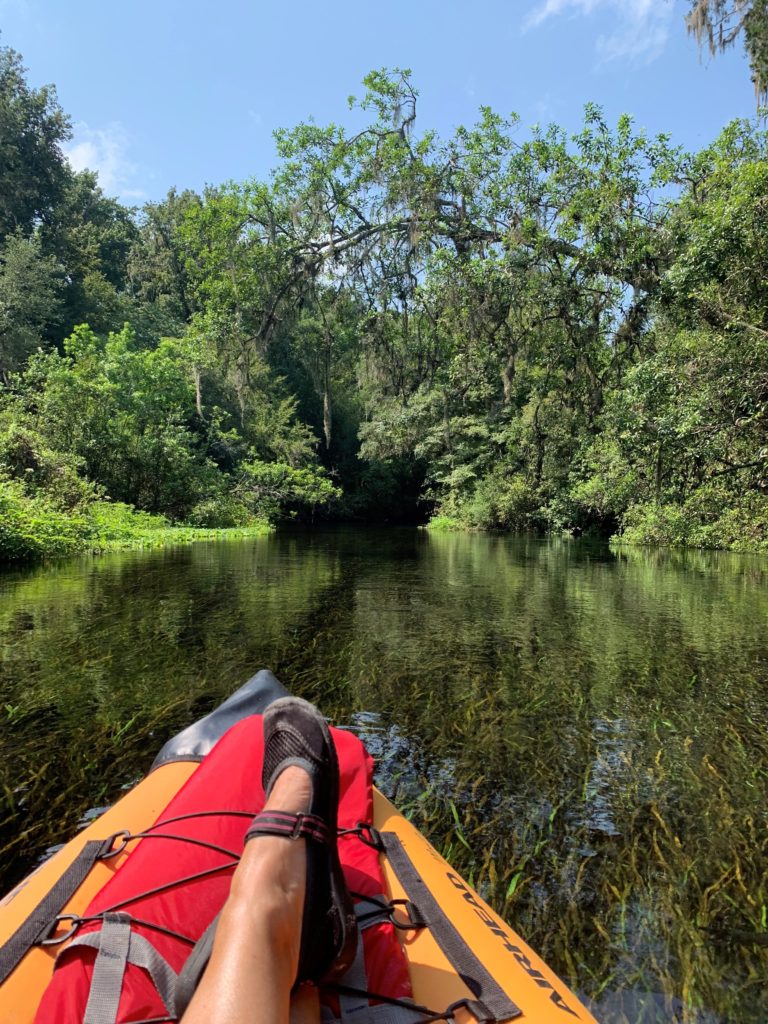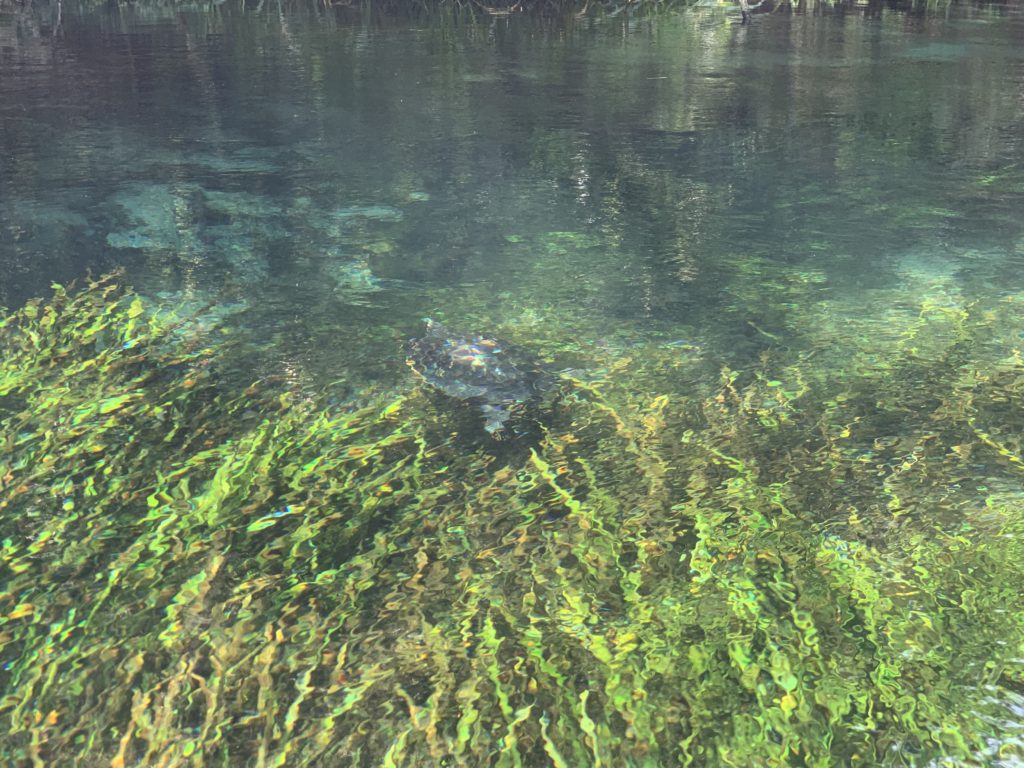
UF Water Institute
FACETS Aims at Aquifer Protection
| THE FLORIDAN AQUIFER Collaborative Engagement for Sustainability (FACETS) project is a 5-year initiative led by the University of Florida Water Institute and funded by the US Department of Agriculture (USDA). The project started in 2017 and includes researchers, Extension professionals, staff, and students from the University of Florida, University of Georgia, Albany State University in Georgia, and Auburn University in Alabama.
The overall goal of the FACETS project is to promote the economic sustainability of agriculture and silviculture in northern Florida and southern Georgia while protecting water quantity, quality, and habitat in the Floridan Aquifer and the springs and rivers it feeds. In Florida, our focus is on the Santa Fe River Basin. The Ichetucknee River and its springs are an important part of the study region fed directly by the Upper Floridan Aquifer (UFA).
The overall goal of the FACETS project is to promote the economic sustainability of agriculture and silviculture in northern Florida and southern Georgia while protecting water quantity, quality, and habitat in the Floridan Aquifer and the springs and rivers it feeds.
The Floridan Aquifer Collaborative Engagement for Sustainability (FACETS) project is a 5-year initiative led by the University of Florida Water Institute and funded by the U.S. Department of Agriculture (USDA).
The UFA is a vital and vulnerable resource shared between Florida, Georgia, and Alabama. Underground water from the aquifer provides drinking water to more than 10 million people, supports the region’s agriculture and timber industries, and feeds our region’s unique natural ecosystems, including springs (Fig 1). Currently, the health and sustainability of the UFA is challenged by increasing water use, degradation of water quality and habitat, climate variability, and uncertainty surrounding the standards and policies that regulate land and water use.

Figure 1. The Floridan Aquifer supports communities and natural ecosystems
At the core of the FACETS project is an understanding and acknowledgement that challenging (and potentially contentious) tradeoffs exist between water quality, water quantity, and the economic and social sustainability of the UFA region. Changes to current land and water use practices are likely necessary to meet environmental standards like Florida’s Minimum Flows and Levels (MFL) program and the Numeric Nutrient Criteria (NNC), and these changes have the potential to impact individual livelihoods and affect the regional economy, rural communities, and even national food security.
Given these interconnections, it is important for regional stakeholders to have the best possible information when considering the social, environmental, and economic trade-offs of current and future practices and policies. The FACETS project brings together researchers, Extension personnel, and regional stakeholders to understand and discuss these tradeoffs. FACETS stakeholders come from the agriculture, forestry, government, and conservation sectors. The Ichetucknee Alliance is represented in this process.
To meet our overarching goal of understanding water quality-water quantity-economic tradeoffs, FACETS team members work in three interconnected areas: 1) on-farm research, demos, and trainings about best management practices (BMPs); 2) modeling the farm- and regional-scale impacts of alternative land use and production practices; and 3) stakeholder engagement and communications.
Farm-scale research is being conducted in both Florida and Georgia to quantify the water use, water quality, and yield impacts of alternative irrigation and nutrient best management practices (BMPs) for the most common crops grown in the region. For the Santa Fe River Basin, these include corn-peanut and corn-carrot-peanut rotations. Other dominant production systems in the watershed are pasture, hay, and forestry (including slash, loblolly, and longleaf pine), which are included in the farm- and regional-scale modeling discussed below.
Through on-farm BMP demos and field days, project team members share the results of FACETS field research and encourage the adoption of promising practices on producers’ farms. Practices include the use of soil moisture sensors (SMS) for irrigation scheduling, optimization of fertilizer application, and the use of cover crops. Initial findings of our BMP research suggest that using SMS and following UF/IFAS fertilizer application guidelines can lead to substantial reductions in water use and nutrient leaching without reducing crop yields.
Building from these findings, decision tools (such as phone apps) are being developed to help producers manage irrigation and fertilizer in real time. In-service Trainings and “Water Schools” are sharing the knowledge developed by the project with other Extension agents, crop consultants, and local decision makers to help develop economically viable options for improving water quality and quantity.
Although field trials are critical for quantifying the “on-the-ground” efficacy of BMPs, models are needed to expand the utility of these results and support decision-making at the watershed scale. For example, understanding how long-term weather and climate interact with different land-use and management approaches to drive river flow and nutrient concentrations is not possible with a short-term field study.
A key aspect of the FACETS project is working with project stakeholders in a “participatory modeling process” (PMP). The PMP includes scientists and stakeholders working together (Fig. 2) to explore and interpret the economic-environmental tradeoffs among alternative climate, land use, BMP adoption, and policy scenarios. By integrating stakeholder knowledge and experience, new and existing experimental data, and diverse modeling expertise, our hope is that FACETS model outputs will be more trusted and useful for decisions makers.
FACETS modeling includes both biophysical and economic models. The biophysical models help us understand the interactions among plant growth, surface and groundwater water flows and levels, and nutrient sources and are being applied both at the farm and watershed scales. Economic models take information about crop and forest yields from the biophysical models and use them to estimate the impacts of different management approaches on farm- and regional-scale economic outputs. Taken together, the results of the biophysical and economic models allow the PMP to develop an understanding of possible sustainable policies and the financial incentives that might be needed to support them.

Figure 2. Project team members and regional stakeholders learn together in the FACETS participatory modeling process (PMP).
Stakeholder contributions to FACETS modeling vary from providing and validating inputs to collaboratively interpreting results. At the farm scale, for instance, the PMP network co-developed a suite of current practices to represent the range of cropping systems and management strategies implemented within the study region. At the watershed scale, participants will co-develop scenarios (visions of future land use and management) and discuss tradeoffs that emerge from the modeling.
Beyond co-creating more accurate and useful models, the FACETS project presents a much-needed venue for deepening dialogue and strengthening relationships among participants within and across states. Many stakeholders report that the opportunity to network with other professionals from across the region is a key benefit of their participation. This finding was gleaned through ongoing communication and surveys of project participants, which is another unique aspect of FACETS. Social scientists regularly interview project participants to assess their satisfaction with activities, inventory unmet needs, and determine levels of confidence in FACETS products and processes. Insights are shared among network participants and with the facilitation team to ensure that workshops are designed effectively and that learning is shared widely.
In addition to developing “best practices” in participatory modeling, FACETS is also supporting research on how to communicate about the sometimes contentious issues under study. A team of researchers is working to understand what people know about water, how people understand the water system and link their observations together, how the media portrays water issues, how different groups perceive water problems and solutions, and how value-laden words affect their willingness to support water policies. This information can be used by Cooperative Extension programs to better communicate information and should have value to those working on other contentious issues.
Acknowledgement: This five-year project (2017-2022) is funded through the United States Department of Agriculture’s National Institute of Food and Agriculture’s Agriculture and Food Research Initiative, award number 2017-68007-26319.
For more information on FACETS visit the website at http://floridanwater.org/
Or contact project scientist and FACETS Principal Investigator (PI), Dr. Wendy Graham, wgraham@ufl.edu

The University of Florida scientists on the FACETS team are familiar with the Ichetucknee and sent us these photos in a recent Zoom meeting. Thanks to Wendy-Lin Bartels for her photo from the canoe and thanks to Nathan Reaver for his underwater view of swimmers at Blue Hole Spring!
P.S. If you’re on the FACETS team and have Ichetucknee photos, send them to us and we’ll put them here. Information about how to submit is on the home page of this website. Thanks!
The University of Florida scientists on the FACETS team are familiar with the Ichetucknee and sent us these photos in a recent Zoom meeting.
P.S. If you’re on the FACETS team and have Ichetucknee photos, send them to us and we’ll post them here. Thanks!
You may be interested in...
Robin Romaine
Robin Romaine A Dip in the Springs | Robin Romaine, who lives in Fort White, says: “You can’t regularly swim in the headspring without having …
River as Teacher
5th Graders Learn About the Ichetucknee Springshed, photo by Jim Stevenson RIVER AS TEACHER Mark Smith’s song in the previous section refers to the “Wisdom …
To See on a River [Mark Smith]
To See On a River by Mark Smith | YOU’D HEARD OF the river with the Native American name for years. Friends had floated it, …





